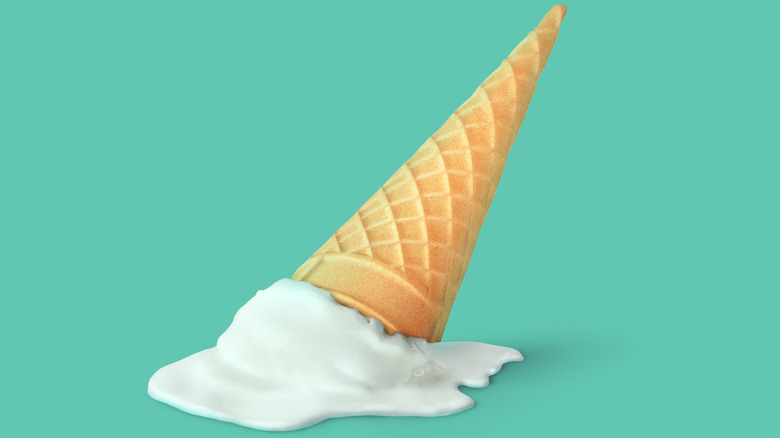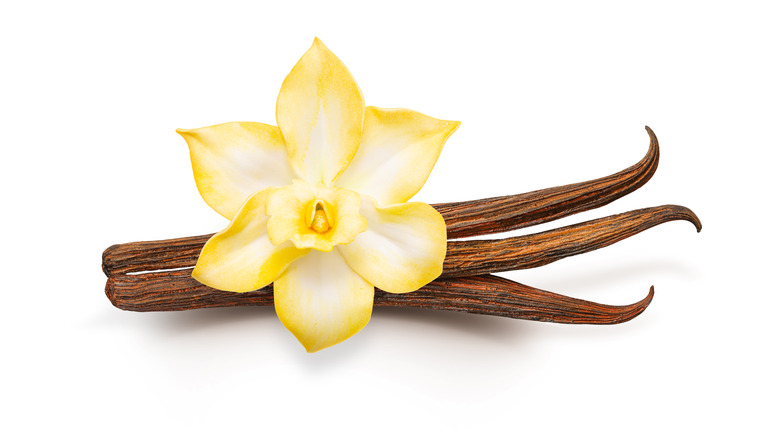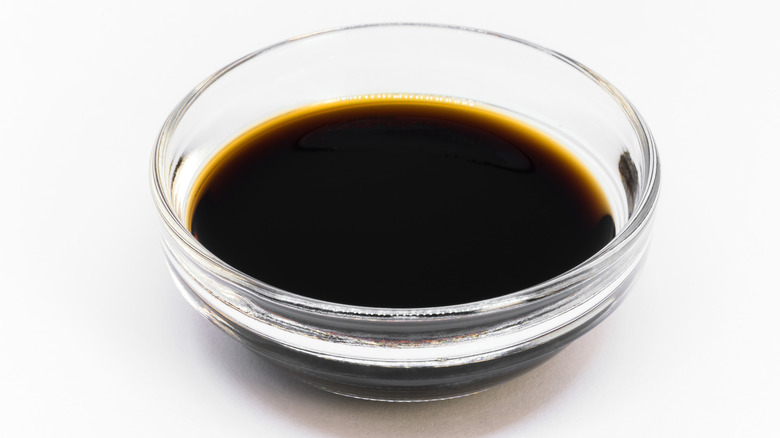The Key Ingredient In Your Imitation Vanilla Might Be Coal Tar
A lot of people out there talk down on vanilla, implying it's bland and boring. Heck, even Merriam-Webster includes "lacking distinction" as a secondary definition and lists its synonyms as "plain," "ordinary," and "conventional." Slander, we say. Vanilla ice cream is unlike anything else in the world: sweet, delicate, and delightful. That's not just our opinion, either. In fact, vanilla is far and away the most popular ice cream flavor in the United States, accounting for more than a quarter of all total sales. But here's the strange thing: Most of those fluffy white pints don't actually contain the real thing. Nor does your frosting, coffee creamer, or almost anything else you see with "vanilla" on the label.
It may be hard to stomach, but you've probably been buying imitation vanilla for most, if not all, of your life without even realizing it. The vast majority of vanilla extract sold globally is artificial, although the exact number varies depending on your source. Insider estimates 95% of the world's vanilla extract is synthetic, while Bon Appétit and America's Test Kitchen say it's more like 99%. In any event, you're likely not eating what you thought or intended. But why is it so difficult to get your hands on real vanilla? More importantly, if the flavor in your ice cream and other sweets isn't, in fact, vanilla, then what is it? We have your answer, but doubt you'll like it.
Why people use imitation vanilla
Real vanilla is expensive and rarer than you might think — and its beans are actually the fruit of a certain type of orchid that only grows in tropical climates. Per Britannica, it's widely believed these orchids originated in Latin America. At any rate, that's where the conquistador Hernán Cortez first tasted it, setting off European cuisine's obsession with the ingredient. However, production has since shifted away from the Americas to Madagascar. The Economist estimates 80% to 85% of the world's real vanilla comes from the tiny African island, and the process of growing and harvesting the plant is rather tedious.
Vanilla orchids must be pollinated by hand, and the flowers only bloom one day each year. Also, 600 of these blossoms will only produce around 1 kilogram (approximately 2.2 pounds) of dried vanilla beans. HowStuffWorks calls it "the most labor-intensive crop in the world," noting saffron is the only more expensive spice. To make matters worse, tropical storms like 2017's Cyclone Enawo destroyed large portions of Madagascar's vanilla crops, sending prices even higher. Taking this all into account, a pound of real vanilla beans can cost around $300. Meantime, America's Test Kitchen notes 1 ounce of vanilla extract can cost as much as $6. Synthetic vanilla extract, on the other hand, only costs around $0.12, but what is it made of?
How artificial vanilla is made
The story of artificial vanilla dates back to 1858 when French scientists first isolated vanillin, the compound that gives vanilla beans their distinct flavor and aroma (via Insider). Once people understood its chemical composition, they started looking for other, cheaper sources that they could synthesize it from, some of which are a bit disturbing. In 1874, a pair of German chemists, Ferdinand Tiemann and Wilhelm Haarmann, devised a way to synthesize vanillin using chemical compounds found in coal tar — and the affordability of their product was appealing enough to make it go mainstream. Other manufacturers used paper, cinnamon, and cow manure for the same purpose. Gross? Absolutely. But by the 1930s, imitation vanilla had come to dominate American pantries.
Today, coal tar has fallen out of favor with vanilla makers, but it's been exchanged for another fossil fuel. According to America's Test Kitchen, most of the vanilla extract you buy is made by synthesizing vanillin from petroleum. When it comes to cooking, there isn't much difference between real and artificial vanilla, unless you consume it raw. Real vanilla has additional flavoring compounds that burn off when baking with it. Interestingly enough, Insider notes real vanilla extract is the only flavor regulated by U.S. law, which states each gallon must have 13.4 ounces of vanilla beans in a 35% alcohol solution. Products made with synthetic vanillin must say "artificial" or "imitation" vanilla.


